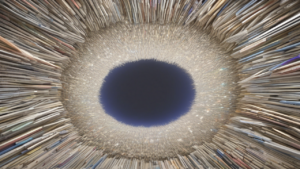Allegations Surface of NASA Concealing UAP Evidence

In recent years, the topic of Unidentified Anomalous Phenomena (UAP), commonly known as UFOs, has garnered significant attention from both the public and governmental bodies. Allegations have emerged suggesting that NASA, the United States’ premier space exploration agency, may be withholding photographic and video evidence related to UAPs.
In 2023, NASA established an independent study team to examine UAPs from a scientific perspective, aiming to identify available data and recommend future data collection methods. The agency has consistently stated that there is no credible evidence of extraterrestrial life or that UAPs are extraterrestrial in origin.
Despite these assertions, some researchers and former government officials claim that NASA possesses high-resolution imagery and data on UAPs that have not been disclosed to the public. Documentaries and publications have explored these claims, suggesting that certain space missions may have encountered unexplained phenomena, with footage allegedly censored or withheld.
Adding to the controversy, in 2023, former intelligence official David Grusch alleged that the U.S. government maintains a highly secretive UFO retrieval program and possesses multiple spacecraft of non-human origin. Grusch’s claims, though primarily directed at military and intelligence agencies, have intensified scrutiny on all government bodies involved in space exploration, including NASA.
NASA has reiterated its commitment to transparency and scientific inquiry. In September 2023, the agency released a report from its UAP Independent Study Team, outlining recommendations for advancing the scientific understanding of UAPs. The report emphasized the need for improved data collection and analysis but did not provide evidence supporting the existence of extraterrestrial technology.
The debate over NASA’s potential withholding of UAP evidence underscores the broader challenges in studying unidentified phenomena. While the agency continues its search for life beyond Earth, the lack of publicly available high-quality observations of UAPs makes it difficult to draw definitive scientific conclusions. As public interest persists, calls for greater transparency and disclosure from NASA and other governmental entities are likely to continue.





